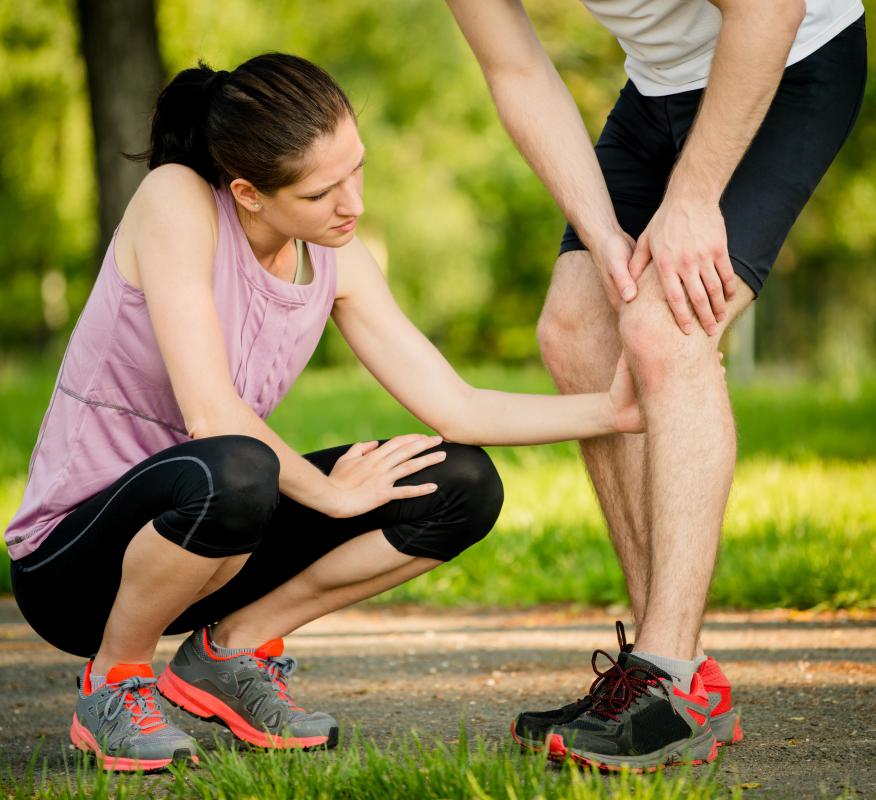At WiseGEEK, we're committed to delivering accurate, trustworthy information. Our expert-authored content is rigorously fact-checked and sourced from credible authorities. Discover how we uphold the highest standards in providing you with reliable knowledge.
What are the Different Types of Shin Splint Supports?
While shin splints are not a serious injury, they can slow a runner down and cause enough pain to make exercise and recreation very painful. Many kinds of shin splint supports are available, however, and can help reduce the pain, speed up the healing process and prevent further damage. Some of the different types of shin splint supports include calf sleeves, calf supports, shin splint compression wraps and sleeves, and heel and arch supports.
Each type of shin splint support works in a different way. The calf sleeve, for example, is designed to be light and comfortable enough for runners to wear on every job to help reduce the chances of getting shin splints in the first place. On the other hand, a calf support can help warm areas that are already affected by the injury, while also providing support and compression. Wraps, sleeves and other shin splint supports that provide compression are said to help minimize the chances of further damage and to allow the existing damage to heal. Some shin splint devices can also hold cold or hot compresses in place.

Of course, someone who has suffered a shin splint can also hold a heating pad or ice pack against the injured leg. Experts recommend holding an ice pack against the injured shin for stretches of 15 to 20 minutes to help with healing. Another easy solution to reduce swelling is for the shin splint sufferer to elevate his or her legs whenever possible. If the pain becomes too intense, over-the-counter painkillers such as ibuprofen or aspirin can help to take the edge off the pain and reduce swelling. Besides shin splint supports, sufferers can even use crutches if the pain ever becomes too great for even walking.

For most runners and other athletes, perhaps the best way to deal with shin splints is not to use shin splint supports but to avoid getting the condition in the first place. One way to avoid getting shin splints is to make sure to replace running shoes every 250 to 500 miles (402.3 to 804.7 km). If runners have flat feet, they might also try placing arch supports in their shoes. Shin stretches are another way to prevent shin splints. Stretching can make the muscles and tendons in the lower legs more durable, flexible and strong.
AS FEATURED ON:
AS FEATURED ON:














Discussion Comments
Having several physical therapy sessions also helps runners deal with problems like shin splints. A good physical therapist will provide various types of therapy and exercises to help runners heal and avoid future injuries.
I use to run, I have had several shin splints over the years. While the various types of shin splint supports to help ease the pain, it is also important to take it easy until your shin splints heal.
After you get a diagnosis from your doctor and follow his or her recommendations, you should also avoid running for a while. This will prevent making your shin splints worse.
As you are healing, it is also important to get plenty of rest and stay off of your feet while your shin splints are healing. As you get back to normal activity, you can wear shin splint supports to help you along. However, it is also a good idea to avoid using them if possible to prevent yourself from becoming too use to wearing them.
Post your comments